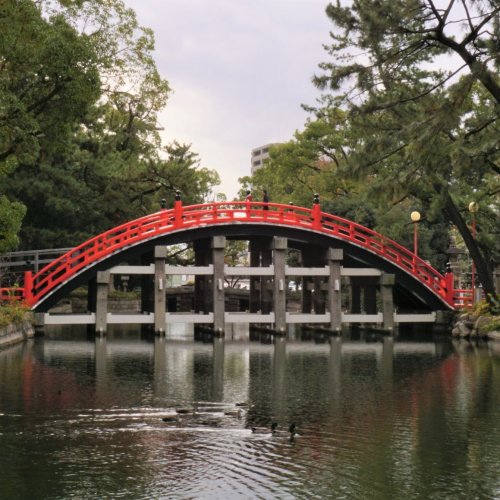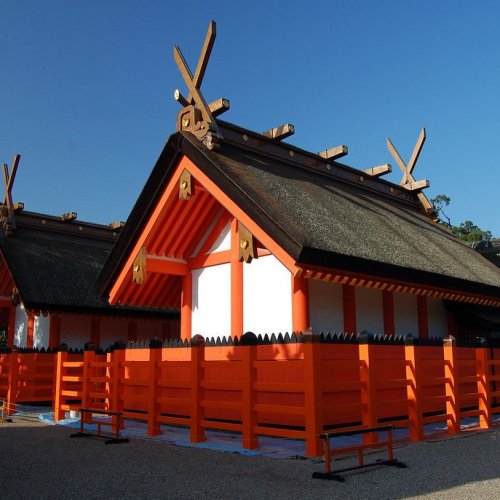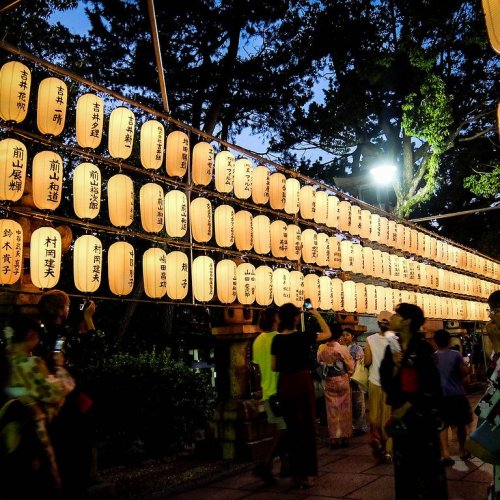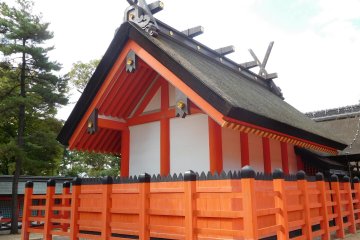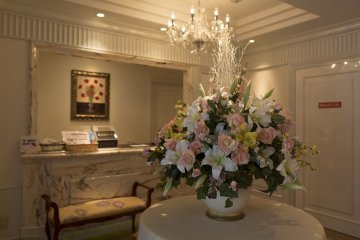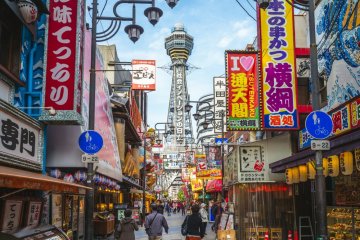Sumiyoshi Taisha, also known as Sumiyoshi Grand Shrine, is one of the most famous shrines in Osaka and one of the oldest in Japan. During hatsumode, the first shrine visit of the new year, over two million people visit this unique shrine. The shrine grounds are a picture of tranquility with vermillion shrine buildings, natural beauty, and glimmering water.
History
Sumiyoshi Taisha is cited in two of Japan’s oldest books, the Kojiki and the Nihon Shoki, as well as one of the world’s oldest stories, Tale of Genji. Legend has it that Sumiyoshi Taisha was founded in 211 CE by Empress Jingu who dedicated it to the Sumiyoshi Sanjin, which is a collective name for the three Shinto gods of the sea and later, waka poetry. Although landlocked now, the shrine used to overlook the ocean. Later, Empress Jingu was also enshrined on the grounds. This act linked the shrine to her son, Emperor Ojin, who was deified as Hachiman, god of war. With the enshrinement of various kami (gods), the shrine is a popular place to pray for a variety of reasons, including safe seas, travel, poetry, fighting (such as martial arts), military, and general health and prosperity.
Sumiyoshi Taisha is the head shrine of over two thousand Sumiyoshi shrines across Japan.
One-of-a-kind architecture
Interestingly, Sumiyoshi Taisha was founded before the introduction of Buddhism in Japan, giving it a unique architectural style called Sumiyoshi-zukuri, which is free of influence from the Asian mainland. This purely Japanese style is registered as a national treasure and characterized by straight roofs, rather than curved ones, decorated with forked finials that resemble crossed poles, and five horizontal billets. The shrine’s four main halls are painted vermillion and surrounded by fences.
Explore the shrine
Sumiyoshi Taisha is home to dozens of shrine buildings, which are complemented by torii gates, rich nature, and stone lanterns. Stroll through the sacred grounds and allow the peaceful energy to rejuvenate your mind and body.





/135.4926132,34.6136667,9/397x132?access_token=pk.eyJ1IjoiamFwYW50cmF2ZWxtYXBzIiwiYSI6ImNqbXBtOXYxbDB5Z3ozbHFrazJuYWMwOGYifQ.v15fy_mcFWtgopmz8PhwqA)
